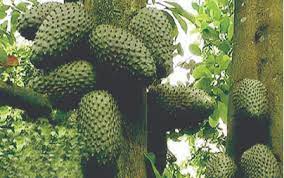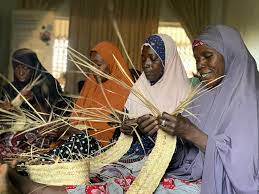
Soursop, also known as Graviola or Annona muricata, is a tropical fruit with immense popularity due to its unique flavor and potential health benefits. With increasing demand for soursop both locally and internationally, starting a soursop farming business in Nigeria can be a lucrative venture.
You can start your soursop farming in Nigeria majorly in the southern part of the country. Some middle belt states like Plateau and Benue also support the soursop plantation in Nigeria. You can carry out soursop farming in a warmand humid tropical region.
This article provides a comprehensive step-by-step guide on how to start soursop farming in Nigeria.
Step 1: Market Research and Feasibility Study
Before embarking on any agricultural venture, it is essential to conduct thorough market research and feasibility study. Identify the demand for soursop in your target market, both locally and internationally. Study the existing market trends, prices, and potential buyers. Determine if there is a need for soursop in your area and evaluate the competition. This research will help you make informed decisions throughout the farming process.
Step 2: Land Selection and Preparation
Choose a suitable location with the right soil and climatic conditions for soursop cultivation. Soursop thrives in tropical and subtropical regions with temperatures ranging from 25 to 35 degrees Celsius. The soil should be well-draining, fertile, and rich in organic matter. Clear the land of any debris, rocks, or weeds. Perform soil testing to assess its nutrient content and pH level. Based on the test results, amend the soil with organic matter and nutrients to create a favorable environment for soursop growth.
Step 3: Sourcing Soursop Seedlings
Acquire healthy soursop seedlings from a reputable nursery or research institute. Choose disease-resistant varieties that are well-suited to the local climate. Inspect the seedlings for any signs of pests or diseases before purchasing. It is advisable to start with grafted seedlings as they have better resistance to diseases and yield higher-quality fruits. Aim for uniformity in the size and health of the seedlings to ensure consistent growth and productivity.
Step 4: Planting and Spacing
Prepare the planting holes in advance, ensuring they are wide and deep enough to accommodate the soursop seedlings' root system. The recommended spacing for soursop plants is 6 to 8 meters apart to allow ample sunlight and air circulation. Plant the seedlings carefully, making sure not to damage the roots. Water the plants immediately after planting to facilitate root establishment.
Step 5: Irrigation and Mulching
Soursop requires regular watering, especially during dry periods. Set up an efficient irrigation system to provide consistent moisture to the plants. Drip irrigation or sprinkler systems are commonly used in soursop farming. Apply mulch around the base of the plants to conserve soil moisture, suppress weed growth, and regulate soil temperature. Organic mulch, such as dried leaves or straw, is highly recommended.
Step 6: Fertilization and Pruning
Fertilize the soursop plants regularly to promote healthy growth and fruit production. Conduct a soil analysis to determine the specific nutrient requirements of your farm. Generally, soursop responds well to balanced organic fertilizers rich in nitrogen, phosphorus, and potassium. Apply the fertilizers in accordance with the recommended dosage and schedule.
Additionally, prune the plants regularly to remove dead or diseased branches and maintain their shape and size.
Step 7: Pest and Disease Management
Common Pests Affecting Soursop Farming
Fruit Fly (Bactrocera spp.): Fruit flies are one of the most destructive pests in soursop farming. They lay eggs in the fruit, leading to larvae infestation, which causes premature fruit drop and rotting. To manage fruit flies, farmers can implement pheromone traps, use insecticides sparingly and strategically, and practice good orchard sanitation by removing fallen fruits and maintaining clean surroundings.
Soursop Seed Borer (Ecdytolopha aurantiana): The soursop seed borer is a small moth whose larvae bore into the fruit's seeds, causing significant damage. Infested fruits exhibit entry holes, decay, and seed damage. Cultural practices such as timely harvesting, removal of infested fruits, and maintaining good orchard hygiene can help control this pest. Additionally, insecticides specifically targeting the soursop seed borer can be employed.
Leaf Miner (Phyllocnistis annonae): Leaf miners are tiny insects whose larvae tunnel through the leaves, resulting in the characteristic serpentine mines. Severe infestations can defoliate the trees, reducing photosynthesis and overall plant vigor. Integrated pest management (IPM) techniques, including regular monitoring, cultural practices, and targeted insecticide application, can effectively control leaf miners.
Soursop Mealybug (Pseudococcus jackbeardsleyi): Mealybugs are sap-sucking insects that infest various parts of the soursop tree, including leaves, fruits, and branches. They secrete honeydew, leading to the growth of sooty mold and stunting of the plant. Cultural practices, such as pruning affected branches and introducing natural enemies like ladybugs and lacewings, can help manage mealybug infestations.
Common Diseases Affecting Soursop Farming
Phytophthora Fruit Rot (Phytophthora palmivora): Phytophthora fruit rot is a devastating disease that affects the fruit, causing soft rot and brown lesions. It spreads rapidly under wet and humid conditions. To prevent Phytophthora, farmers should ensure proper drainage, avoid overwatering, and apply fungicides containing active ingredients like metalaxyl or fosetyl-aluminum.
Soursop Wilt (Ceratocystis spp.): Soursop wilt, also known as annona wilt or "dry rot," is a lethal disease caused by soil-borne fungi. Infected trees show wilting, leaf yellowing, and fruit drop. Management of soursop wilt involves implementing strict hygiene measures, including removal and burning of infected plant parts, soil solarization, and grafting of resistant rootstocks.
Anthracnose (Colletotrichum gloeosporioides): Anthracnose is a fungal disease that affects various parts of the soursop tree, including leaves, stems, and fruits. Infected fruits develop sunken, dark lesions, leading to premature fruit drop and reduced market value. Disease prevention involves applying copper-based fungicides, practicing proper sanitation, and avoiding overhead irrigation.
Powdery Mildew (Oidium annonae): Powdery mildew is a fungal disease that appears as a white powdery coating on leaves, stems, and fruits. It can hinder photosynthesis and weaken the plant. To control powdery mildew, farmers should maintain good airflow, avoid overcrowding, and apply fungicides containing active ingredients like sulfur or potassium bicarbonate.
Integrated Pest and Disease Management Strategies
Cultural Practices: Implementing good agricultural practices such as proper sanitation, regular pruning, removing and destroying infected plant parts, and maintaining optimal growing conditions can help prevent and manage pest and disease outbreaks in soursop farming.
Biological Control: Introducing natural enemies such as predatory insects, beneficial nematodes, and microbial agents can help control pests and diseases. For instance, ladybugs, lacewings, and parasitic wasps can effectively control mealybugs, leaf miners, and certain fruit flies.
Chemical Control: When necessary, judicious use of pesticides can help manage severe pest and disease infestations. However, it is essential to follow label instructions, choose appropriate products, and employ integrated pest management (IPM) approaches to minimize environmental impact and promote sustainability.
Disease-Resistant Varieties: Selecting disease-resistant soursop varieties can significantly reduce the risk of infection. Collaborating with agricultural extension services and research institutions can provide access to improved varieties suitable for specific regions.
Monitoring and Early Detection: Regular monitoring of soursop orchards enables timely detection of pests and diseases. Prompt action can prevent or limit the spread of outbreaks, minimizing crop damage and economic losses.
Step 8: Harvesting and Post-Harvest Handling
Soursop starts flowering after three (3) years and fruits the same year; it continues fruiting every other year in great numbers. The fruuts should be harvested when they are fully developed and greenish in nature. Leave it for about two to four (2-4) days to ripe. A tree soursop can yield between sixty to seventy (60-70) fruits in a year. Their peak period is between May-June but the fruit all year round.
When soursop is matured for harvest, the spine set themselves far apart and the shiny green colour becomes dull or yellowish-green.
Soursop fruits are typically ready for harvest 3 to 4 months after flowering. Harvest the fruits when they are mature but still slightly firm. Handle the fruits carefully to avoid bruising or damage. After harvesting, sort and grade the fruits based on their size, shape, and quality. Properly package and store the fruits in cool, well-ventilated conditions to prolong their shelf life.
Step 9: Marketing and Sales
Market Channels: Identify potential market channels for your soursop produce. Develop relationships with wholesalers, retailers, juice manufacturers, or export companies. Participate in local markets, trade fairs, or agricultural exhibitions to showcase your products.
Value-Added Products: Consider processing soursop fruits into value-added products such as juices, jams, or ice creams. This can increase profitability and cater to different market segments.
Branding and Promotion: Create a unique brand identity for your soursop farm. Use effective marketing strategies such as online platforms, social media, or print media to promote your products. Emphasize the quality, health benefits, and unique characteristics of soursop.
Health Benefits of Soursop
Every part of the tree is medicinal; the roots, stems, bark, fruits, leaves. Maybe that is why it is called miracle tree just like moringa tree. Click here for moringa farming.
Soursop contains nutrients such as fatty acids, vitamin c, iron B1, B2, Magnesium etc.
It is an anti-aging , anti-diabetic, anti-inflammatory, anti-cancer and anti-tumor. Good in; boosting immune, liver tonic, sedative and laxative.
Conclusion
Starting a soursop farming business in Nigeria can be a rewarding and profitable venture. By following this step-by-step guide, you can establish and manage a successful soursop farm. Remember to conduct thorough market research, choose suitable land, source quality seedlings, implement proper cultivation techniques, and manage pests and diseases effectively.
With dedication, patience, and proper planning, you can embark on a thriving soursop farming journey in Nigeria.






















